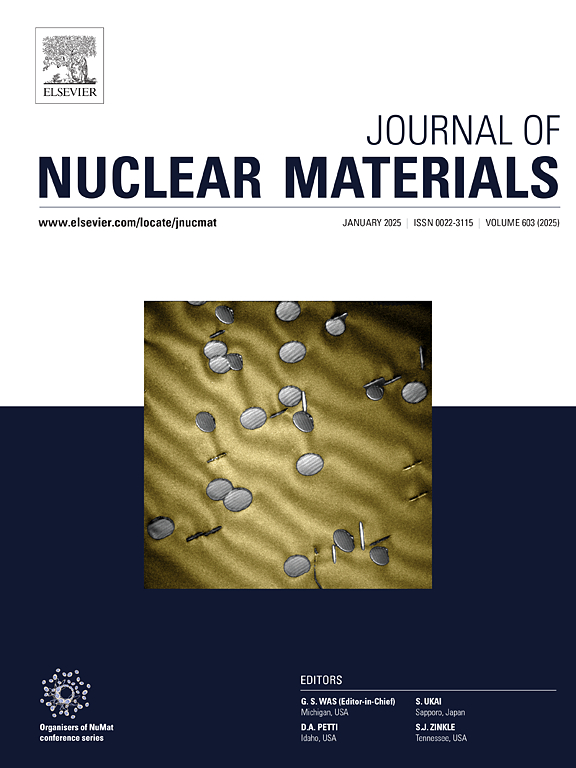Effect of cold forging on the microstructure and corrosion behavior of type 316L stainless steel in molten FLiNaK salt
IF 2.8
2区 工程技术
Q3 MATERIALS SCIENCE, MULTIDISCIPLINARY
引用次数: 0
Abstract
The effect of cold forging on the microstructure and corrosion behavior of 316L stainless steel (SS) in molten salt was investigated. Static corrosion experiments were performed in FLiNaK (LiF-NaF-KF: 46.5–11.5–42 mol.%) at 600 °C for 50 h in a glove box. The results show that cold forging gives rise to enhanced corrosion of 316L SS in molten fluoride salt due to the increase of crystallographic defects. Based on the potentiodynamic polarization results, the corrosion current density of 50 % cold-forged 316L SS is about 2.1 times larger than that of the as-received 316L SS in molten FLiNaK salt at 600 °C.
求助全文
约1分钟内获得全文
求助全文
来源期刊

Journal of Nuclear Materials
工程技术-材料科学:综合
CiteScore
5.70
自引率
25.80%
发文量
601
审稿时长
63 days
期刊介绍:
The Journal of Nuclear Materials publishes high quality papers in materials research for nuclear applications, primarily fission reactors, fusion reactors, and similar environments including radiation areas of charged particle accelerators. Both original research and critical review papers covering experimental, theoretical, and computational aspects of either fundamental or applied nature are welcome.
The breadth of the field is such that a wide range of processes and properties in the field of materials science and engineering is of interest to the readership, spanning atom-scale processes, microstructures, thermodynamics, mechanical properties, physical properties, and corrosion, for example.
Topics covered by JNM
Fission reactor materials, including fuels, cladding, core structures, pressure vessels, coolant interactions with materials, moderator and control components, fission product behavior.
Materials aspects of the entire fuel cycle.
Materials aspects of the actinides and their compounds.
Performance of nuclear waste materials; materials aspects of the immobilization of wastes.
Fusion reactor materials, including first walls, blankets, insulators and magnets.
Neutron and charged particle radiation effects in materials, including defects, transmutations, microstructures, phase changes and macroscopic properties.
Interaction of plasmas, ion beams, electron beams and electromagnetic radiation with materials relevant to nuclear systems.
 求助内容:
求助内容: 应助结果提醒方式:
应助结果提醒方式:


